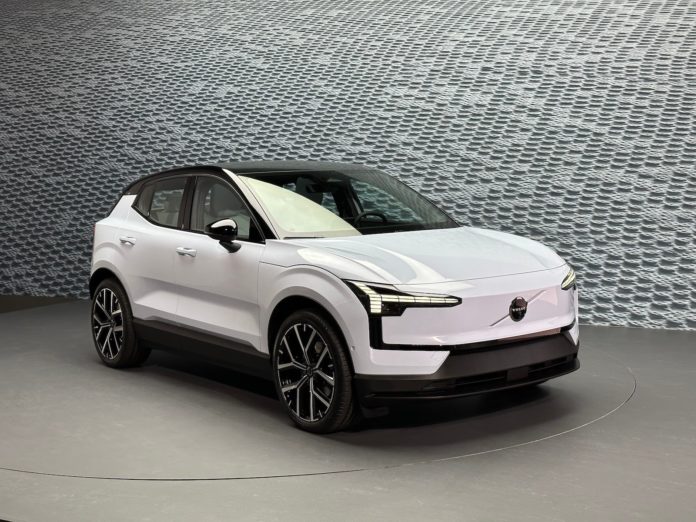Volvo’s push towards an all-electric future got charged up Wednesday with the debut of the new EX30 during a preview in Milan. The Swedish automaker bills the new model as not only its smallest SUV, but the fastest product it’s ever introduced, with 0-60 launch times as low as 3.4 seconds.
And with a U.S. starting price of $34,950 – before delivery fees – the 2024 EX30 will become one of the most affordable products in the EV sector when Volvo starts deliveries later this year.
“The fully electric EX30 might be our smallest ever SUV, but it’s a big deal for our customers and a big deal for us as a company,” Jim Rowan, Volvo’s global chief executive, said in a statement. “We like to say the EX30 is small yet mighty, because it delivers on everything you’d want from a Volvo but in a smaller package. Like any Volvo, it’s an outstanding product which is safe and designed around people and their needs.”
Going all-electric
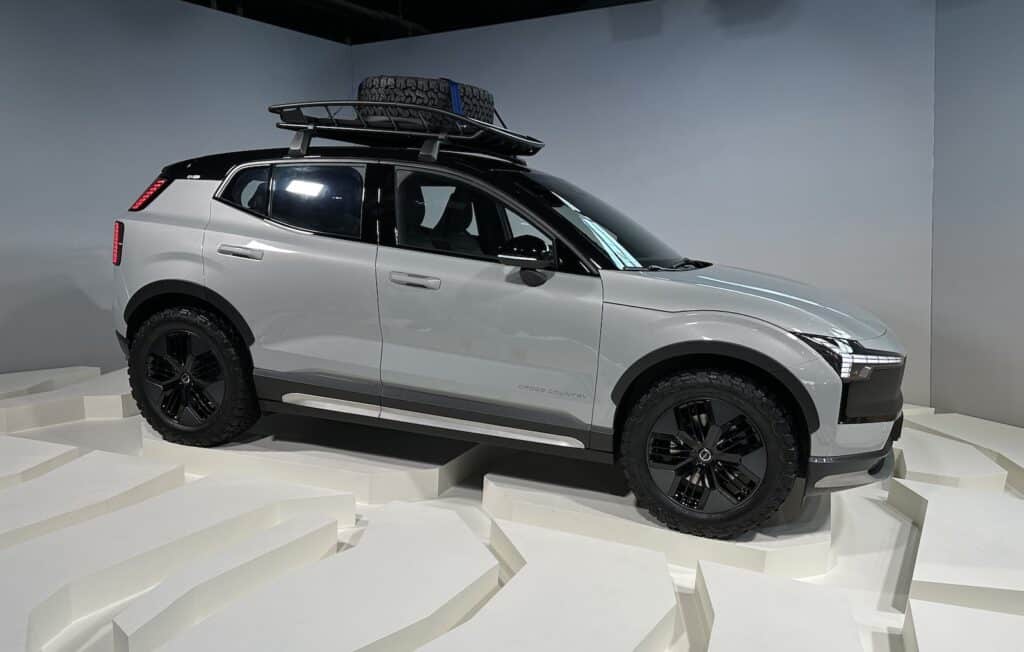
Rowan’s predecessor, Hakan Samuelsson, laid out a plan to eliminate internal combustion technology – including plug-in hybrids – by 2030. The Chinese-owned automaker already begun that transition with products like the C40 Recharge that went on sale last year, as well as the new EX90 flagship that will go into production in 2024. All told, the EX30 brings to four Volvo’s line-up of battery-electric vehicles.
Up until recently, Volvo products were designed to use a variety of different powertrain options, including gas and plug-in hybrid. The automaker’s new battery-powered models now get unique platforms. This approach allows Volvo designers and engineers to optimize their layout by placing key drivetrain components, including batteries and motors under the load floor, freeing up space for passengers and cargo.
At a total length of 166.7 inches, the EX30 is fully eight inches shorter than the C40 Recharge, but its wheelbase is just two inches shorter, at 104.3. So, while the new EX30 may have a subcompact exterior “footprint,” that translates into a class-size-above interior. With the rear seats folded down, the EX30 offers a maximum 31.9 cubic feet of cargo space.
“It was designed to be driven in the city,” said CEO Jim Rowan at the model’s reveal in Milan.
A familiar design
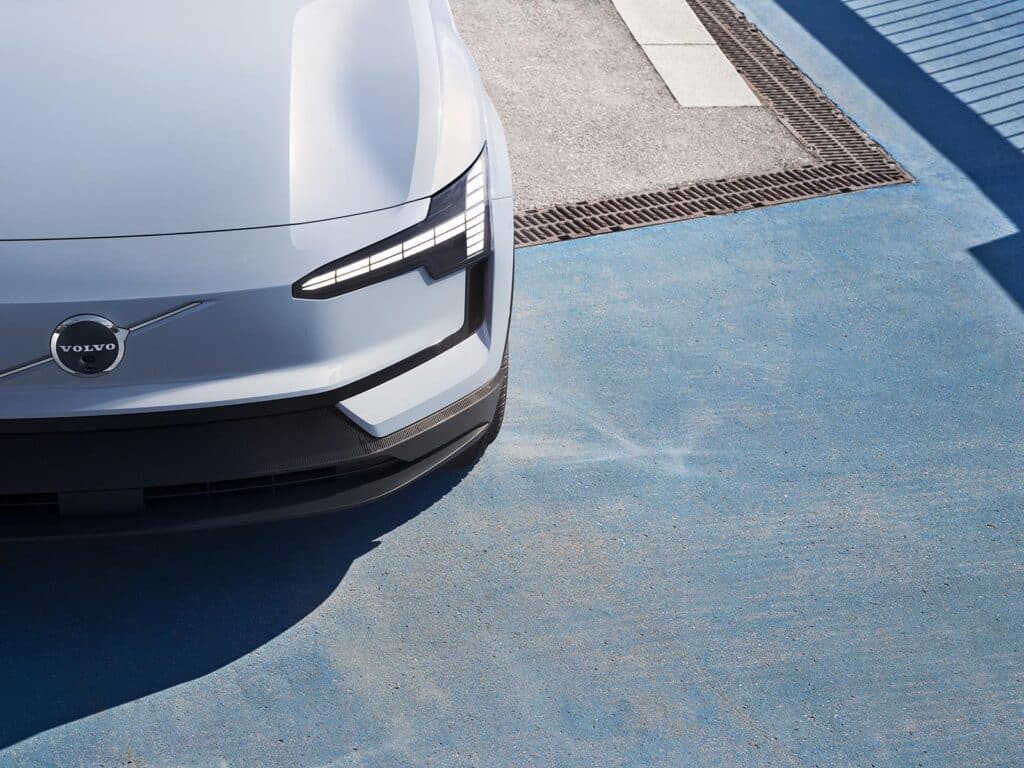
The basic design won’t shock or surprise Volvo loyalists. The EX30 features the classic “iron mark” logo on its nose, as well as Volvo’s familiar “Thor’s Hammer” headlamps. But the electric SUV features larger wheels and shorter overhangs than comparably sized products.
The overall shape, including the coupe-like roof and steeply raked windshield and back light, reflects extensive work in the wind tunnel, aerodynamics playing a critical role in the performance and range of an electric vehicle.
Range, power and performance
Like many manufacturers, Volvo has developed the EX30 to use multiple battery packs depending on the market. In Europe and some other regions, there will be a relatively low-range LFP, or Lithium-Ion-Phosphate option. The trade-off is a lower price.
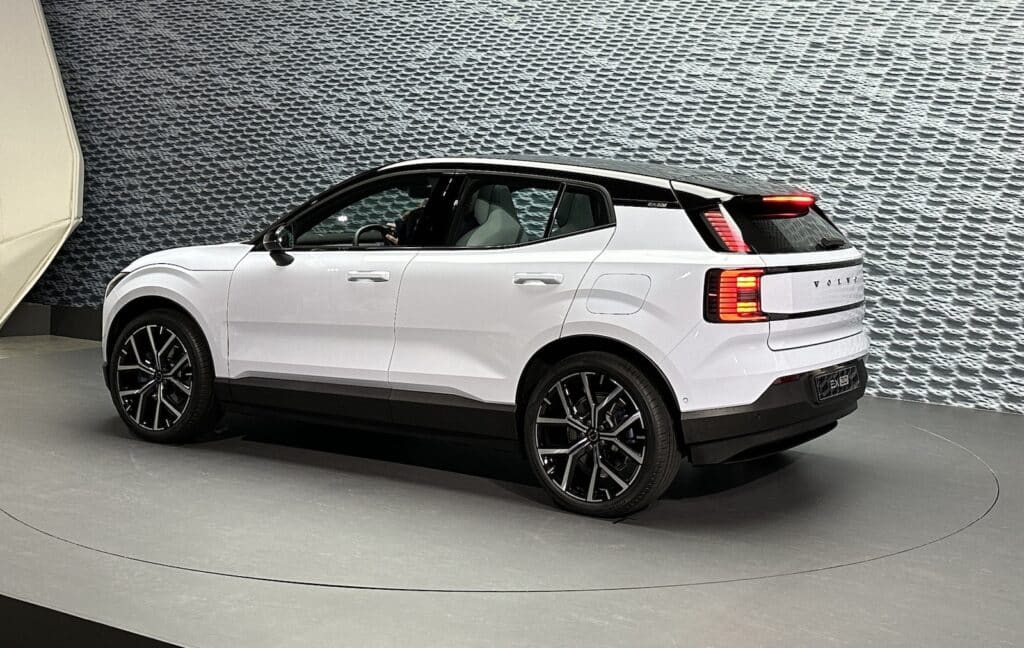
For the U.S., there will only be one option, a lithium-ion pack. Despite its relatively small footprint, Volvo was able to squeeze in a large enough battery pack to deliver an estimated 275 miles per charge with the EX30 Single Motor Extended Range package. The rear-wheel-drive model produces a peak 268 horsepower and 253 pound-feet of torque, enough to launch from 0-60 in 5.1 seconds.
Motorists will sacrifice about 10 miles of range, for an estimated 265 miles per charge, with the EX30 Twin Motor Performance package. The two motors combine to deliver 422 hp and 400 lb-ft, with launch times cut to 3.4 seconds.
“It’s officially our fastest-accelerating car ever!” Volvo said in a release.
The twin motor package adds 282 pounds to the single motor versions 3,858-pound curb weight.
With 64 kilowatt-hours of usable energy storage, the Volvo EX30 can go from a 10%-to-80% state-of-charge in as little as 26.5 minutes when connected to a DC quick charger, the automaker claims. It can draw as much as 153 kilowatts of current depending upon the system it’s plugged into.
Volvo didn’t reveal charging times using a home 240-volt system, but considering the size of the pack that should come in at approximately eight hours based on similar EVs.
Safety and technology
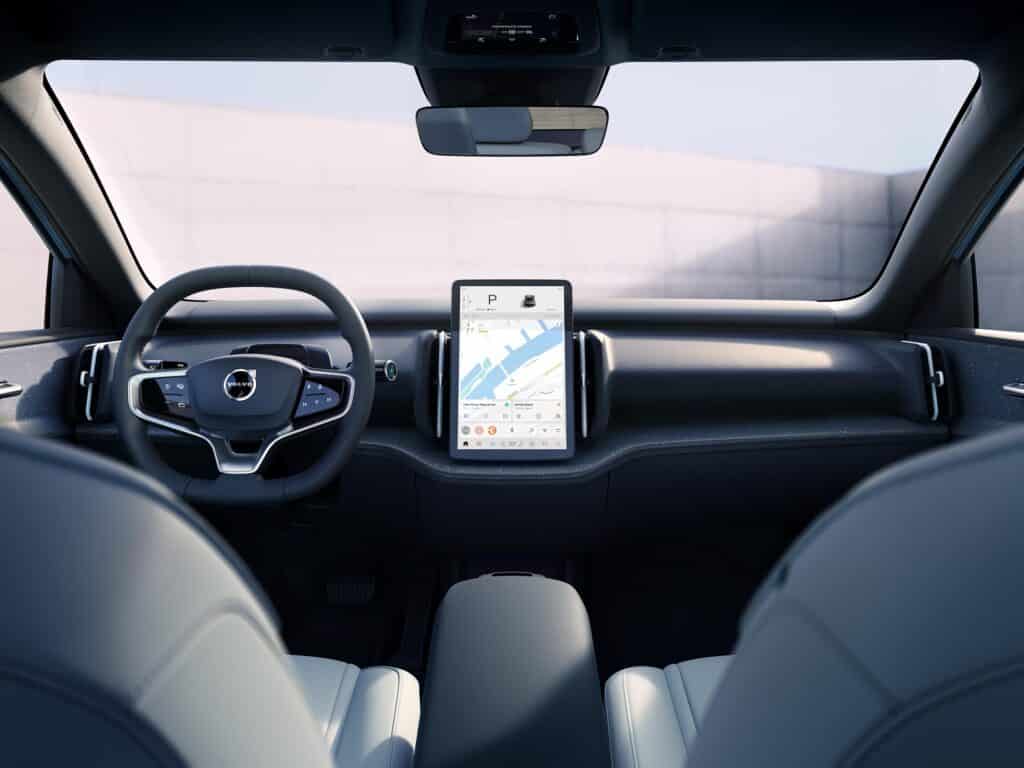
Fitting the brand’s traditional focus, the new EX30 offers an extensive array of safety technologies. That includes passive structural design elements intended to absorb crash energy, as well as advanced driver assistance systems such as forward collision warning with automatic emergency braking. A new system helps prevent “dooring” accidents by alerting occupants not to open their doors if there’s an oncoming vehicle or bicycle.
“With the Volvo EX30 we are taking city safety to the next level, creating a small SUV that is your perfect companion for a comfortable driving experience, while it looks after you and other people on the busy streets of modern cities,” said Åsa Haglund, head of the Volvo Safety Center, said last month.
As has become the norm in today’s EVs, Volvo is loading up the EX30 with digital technology. Surprisingly, one thing is missing: a digital gauge cluster. The EX30 is one of only a handful of vehicles relying on a single, large touchscreen atop the center stack to serve as both the infotainment and instrument display. How it will be received by customers is a question mark. And at least for now, there is no head-up display, even as an option.
Volvo has begun migrating to an all-new infotainment system powered by Google software. Other features use Qualcomm technology and a wireless version of Apple’s CarPlay is built into the electric crossover. For now at least, there is no Android Auto, nor any version of Amazon Alexa voice assistant.
Digital key
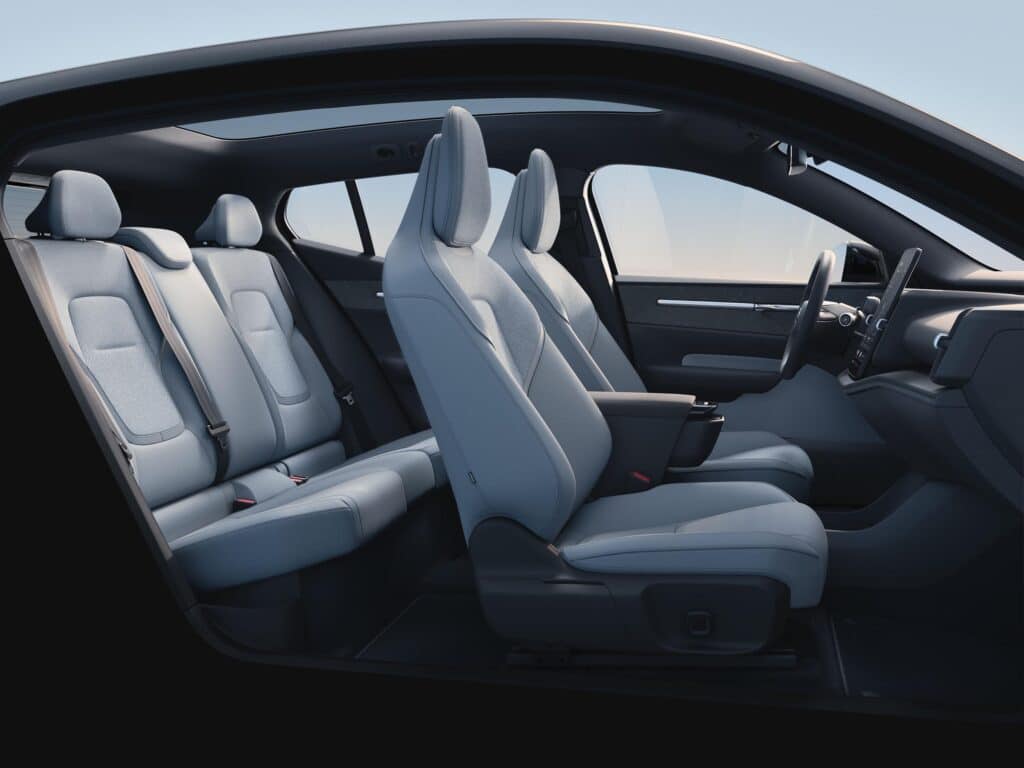
The EX30 also offers Volvo’s new Park Pilot Assist which will help identify a parking spot and then pull in entirely without a driver’s involvement.
A digital key, which will allow a driver to leave the traditional keyfob at home, is part of the package, as is a smartphone app that allows motorists to check up on and control the vehicle remotely.
And the EX30 has smartphone-style over-the-air update capabilities. The automaker can use that to reflash faulty software or add new vehicle functions.
“There will be a lot of new functionality coming to the car in the not-to-distant future,” said Alwin Bakkenes, head of software development for Volvo Cars.
Multiple options
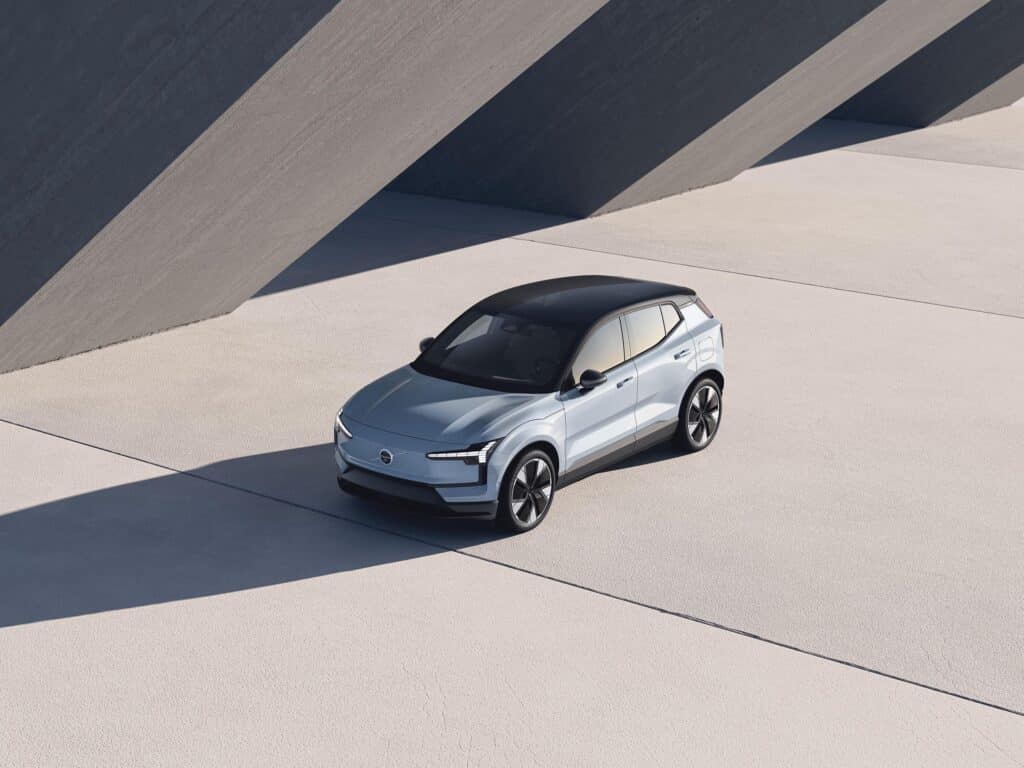
There will be a variety of different trim packages depending upon the individual market. As noted, there will be various battery pack options and both single- and twin-motor versions.
In the U.S., buyers will not only have all-wheel drive and rear-drive models, but a new EX30 Cross Country. It’s expected to have the twin-motor drivetrain, and the standard lithium-ion battery pack. It also will get additional cladding around the base of the body, larger wheels, higher ground clearance and skid plates that suggests it should be able to handle modest off-road duties.
Roll-out timing of the individual variants was not disclosed.
Pricing and availability
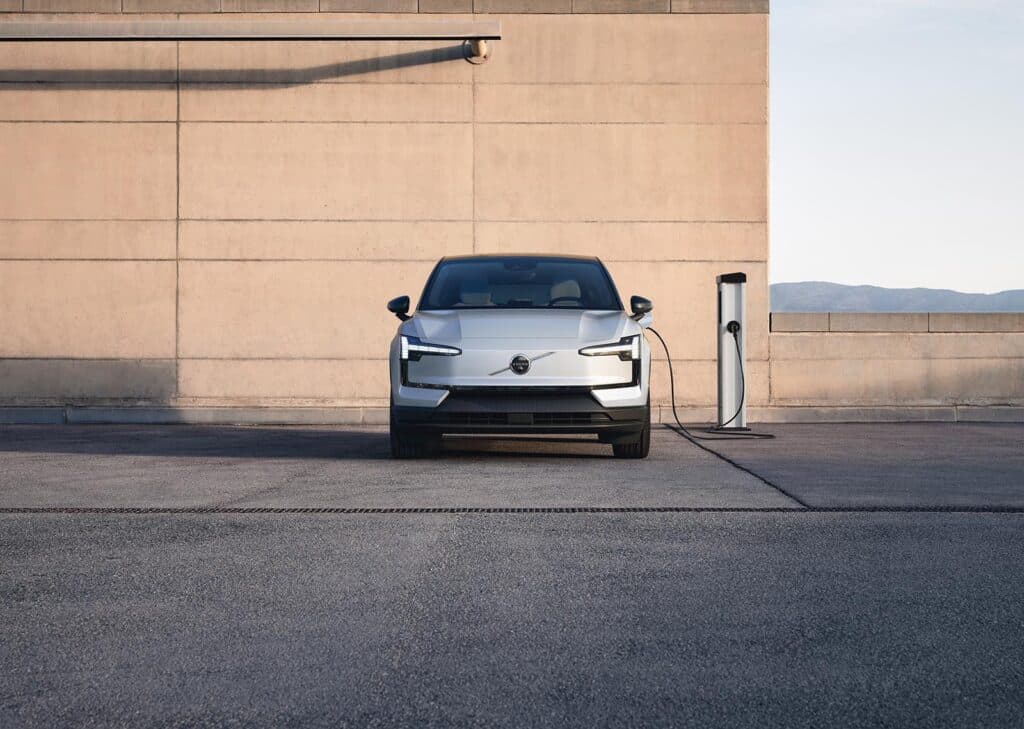
“With the Volvo EX30, we aim to bring premium, fully electric mobility to a much broader audience, helping to advance and speed up the transition to full electrification that our industry and society needs,” said Rowan.
The automaker began taking orders for the 2024 Volvo EX30 immediately after unveiling the new EV. Deliveries are expected to begin in the second quarter of 2024.
While customers will be able to purchase the EX30 outright, at a starting price of $34,950, Volvo also plans to offer buyers other options, including leasing and its subscription program. It didn’t release U.S. numbers, but in Europe, subscriptions will start at €599, or $640, a month.

